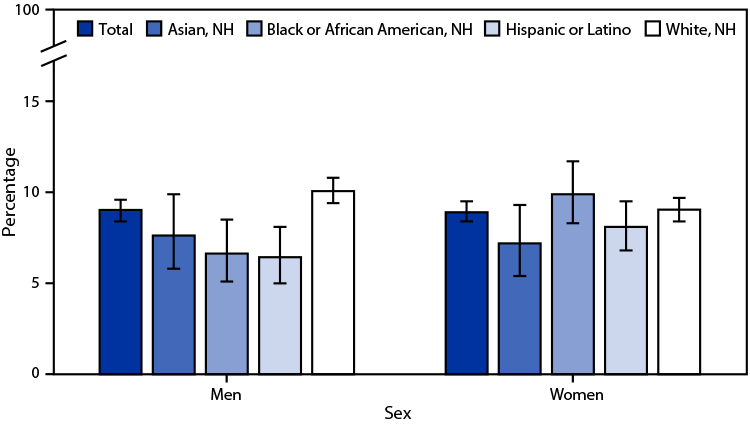Category: injury
Q & A from the Report Author of Repetitive Strain Injuries in Adults

Questions for Matthew Garnett, Health Statistician and Lead Author of “Repetitive Strain Injuries in Adults in the Past 3 Months: United States, 2021.” Q: Why did you decide to look at repetitive strain injuries? MG: When people tend to think about injuries, they often think of acute injuries like cuts or broken bones. However, repetitive Read More >
Posted on byQuickStats: Age-Adjusted Percentage of Adults Aged ≥18 Years Who Had a Repetitive Strain Injury During the Past 3 Months, by Sex and Race and Hispanic Origin

In 2021, 9.0% of men and 8.9% of women aged ≥18 years had a repetitive strain injury during the past 3 months. Non-Hispanic White men (10.1%) were more likely to have a repetitive strain injury than were non-Hispanic Asian (Asian) (7.6%), non-Hispanic Black or African American (Black) (6.6%), and Hispanic or Latino (Hispanic) (6.4%) men. Read More >
Posted on byA brief look at emergency room visits
In 2006, about 4 out of every 10 people visited an emergency room. Of those visits– About 22% were seen in less than 15 minutes. About 13% needed hospital admission. Only about 2% needed to transer to higher level or specialized care. The most common diagnosis in emergency departments–injury and poisoning. For more NCHS Fast Stats, Read More >
Posted on by
